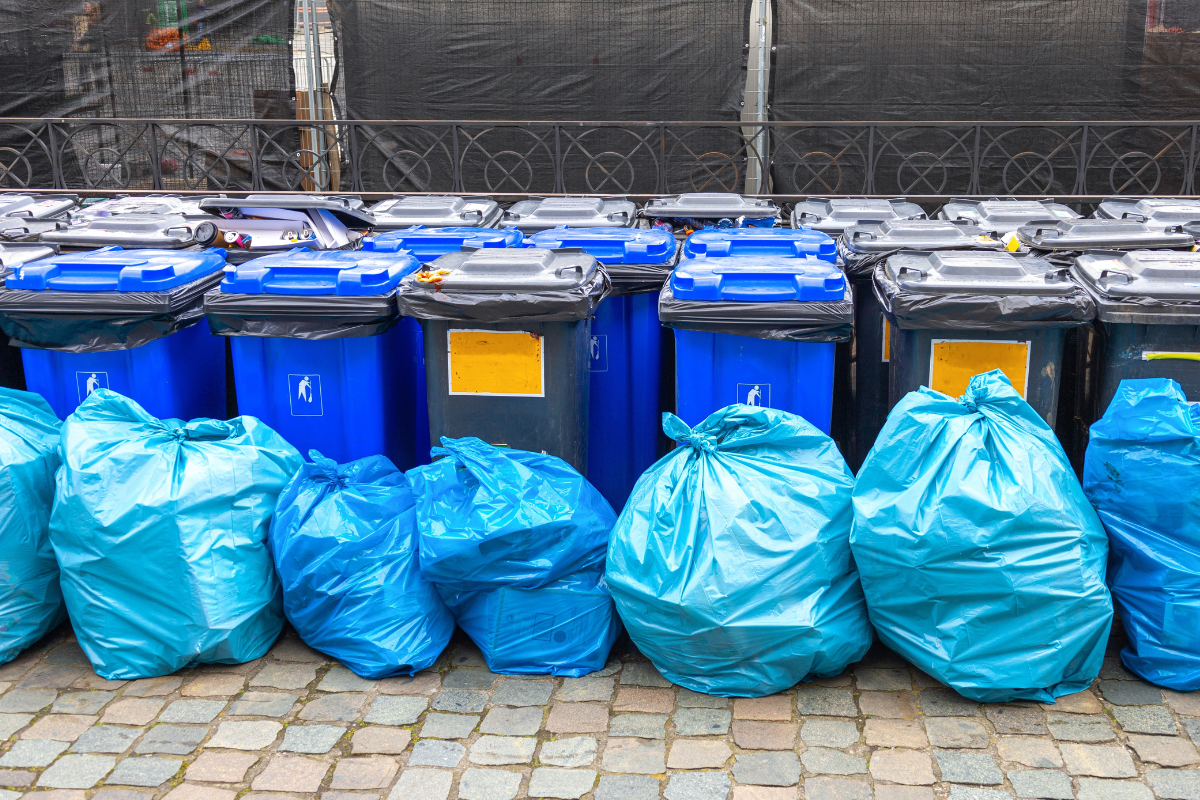Setting up successful organics diversion – whether statewide or just in one city – requires creativity, flexibility and a strong education campaign, presenters at WasteCon 2024 told attendees.
The event, held by the Solid Waste Association of North America Oct. 21-24 in Grapevine, Texas, had a series of sessions focused on organics diversion, as more and more municipalities look to extend landfill life, reduce methane emissions and better support sustainability priorities.
One big challenge with setting up a drop-off based composting program is community engagement and buy-in. Domingo Morales, founder of Compost Power in New York City, has used a combination of methods to collect and process more than 600 tons of organics per year using only human power. The organization is also processing meat, dairy and bone – the only community compostor in the city doing so.
Compost Power has nine compost sites in the city, five of which are located on public housing campuses, and has forged strong partnerships with residents, management and other local groups.
Morales said growing up in public housing in New York City, “everything went in the trash chute” – there was no access to other options. He joined Americorp when he was 22, “fell in love with urban farming and community composting,” and went on to work for city composting services. However, when the city cut much of the funding in 2020 and he was laid off, he decided to keep going and founded Compost Power.
“I wanted to make composting cool and remove the negative associations,” he said, noting that growing up, if anyone mentioned composting, the response was, “It’s something hippies do. It’s privileged.”
He used creative songs, community partnerships and education to get people interested – and now he hires young people living in public housing to run the programs.
Compost Power started off with staffed drop-offs but heard from residents that making the hours was too difficult. They then tried permanent plastic toters, but contamination was high.
“Management wanted cleaned and waxed bins. We knew something had to change,” Morales said.
Then he found the metroStor bins. They’re rat-proof, require a PIN or app code to unlock and have a better curb appeal than plastic toters, Morales said. Each one can hold up to 350 pounds of food and is easy to empty and clean.
What truly stood out to him about the bins was that unlike some other models, they don’t require an app.
“In public housing, some residents don’t have a phone or wifi,” he said. “That was not an option for me because if I put that in public housing, it’s saying this is not for you.”
Morales purchased two bins, and said that even before he got signage up, he saw a 20% increase in people asking for the PIN and asking about the bin.
“We found that residents felt special when we gave them access,” he said. In addition, the bins provided a 60% reduction in contamination, “since people were not able to just open it without learning about the program.”
Now Compost Power is emptying the two bins three times per week, and Morales said he wants to add many more bins, perhaps up to 16 per campus. They also have custom wrap designs on them, which engage and educate those walking by.
“We need to be innovative and think of cool ways to get people engaged,” he said. “If you become a resource for the community, that’s where you get investment.”
New York has a statewide organics diversion mandate, though it only covers businesses that generate two tons of organics per week and are within 25 miles of an organics recycler. The mandate doesn’t cover New York City, which has its own requirements.
For those looking to start city-run collection services, several solid waste directors from Texas cities gave some tips. Brian Boerner, director of solid waste and recycling for Denton, said that setting up commercial collection in a historic town with several colleges required piggybacking off existing infrastructure, which avoids the permitting process, and using small capital outlays.
To start, he gave organics carts to 35 bars that signed up, collecting about one ton of material per week in the past year and using the added fees to buy equipment to scale up, such as a shredder. Now he’s looking at expanding to institutional kitchens in the second year, then to other restaurants in year 3.
It’s a priority, Boerner said, because about 20% of Denton’s overall waste stream is organic material, and the nearby landfill only has 45 years left. The phased rollout allows him to do something at low cost to residents, Boerner added.
“Five dollars extra per month is a lot to a lot of folks,” he said
The program is essentially a net-zero cost to the city, but even if that changes, the savings from adding even 20 more years to the landfill “makes it make sense financially,” Boerner said.
Moderator Scott Pasternak, associate and department manager for solid waste and resource recovery with consulting firm Burns & McDonnell, added that it’s important for solid waste directors to think about areas of city control versus influence and decide the appropriate roles for the city versus the private sector.
For example, who owns the land the program will use? Who will operate the program? Who makes capital investment? There are numerous answers to that question depending on a city’s circumstances, he noted.
California composting
California differs from Texas in that it has a statewide organics diversion mandate, which passed in 2016.
Zoe Heller, California Department of Resources Recycling and Recovery director, and Michelle Leonard, senior vice president at SCS Engineers, gave an update on SB 1383 to a packed room. At the time of passage, two-thirds of landfill disposal in the state was organic material. The law mandated both 75% statewide diversion from a 2014 baseline by Jan. 1, 2025, and a 20% source reduction, meaning edible food needed to be “rescued from disposal to feed hungry Californians.”
Now, eight years, 66 workshops, more than 5,000 formal comments and five rule drafts later, the first deadline is coming up. Heller said the extended implementation time was beneficial because it allowed CalRecycle to talk to haulers, governments and other stakeholders and help them prepare.
That included creating local capacity plans and implementation flexibility, she added. Jurisdictions got to choose if they wanted one, two or three organics bins; the size; the collection frequency; the container color and labeling within certain parameters; and whether they needed to apply for waivers and exemptions. For example, rural areas can get waivers for collection, Heller said, and higher elevations have some flexibility to deal with bears.
“We want to make sure that we are providing all the resources possible to bring them into compliance,” Heller said. “We are starting compliance evaluations this year, and the first version is like a report card.”
She added that many compliance reviews will likely result in compliance action plans, but the agency is focused on compliance education over penalties and enforcement – at least to start.
Leonard said that SB 1838 differs from some other state mandates in that it gives CalRecycle true enforcement ability: “This one has teeth.”
As for how the state is doing with those 75% division and 20% reduction goals, Heller said it seems to be on track.
“This has been very hard. I want to be very honest and transparent about that,” she said, noting that the agency won’t know if it has hit the targets until after it finishes its next waste characterization study. However, from a program implementation standpoint, “we’re doing very well.”
About 93% of jurisdictions who do not have waivers in place have collection programs set up, she said, and early reports show a reduction of about 2 million tons of organics going into landfill in 2021 compared to 2018.
Looking at food recovery, there has been a huge expansion of programs, Heller said, and the state hit 93% of its food recovery target in 2023. That’s 217,042 tons of food recovered, or over 362 million meals. Using a 2018 baseline, a 20% reduction would be about 231,000 tons diverted.
“The fact that we have diverted so much edible food from landfill and gotten it to people who needed it is a huge success,” she said.





















